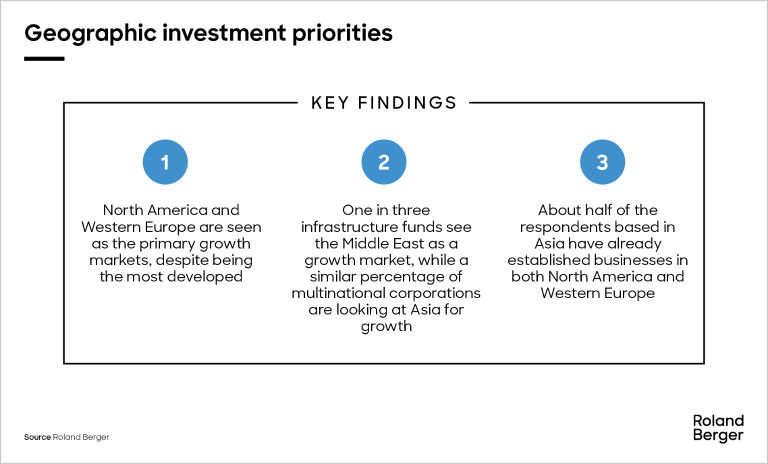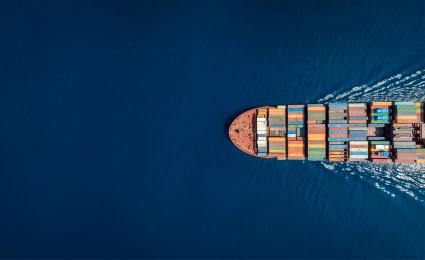Roland Berger's Currents of Capital 2025 Report sheds new light on the investment trends and emerging opportunities in the Middle East's vital water sector.


Liquid assets
By Christophe Guillet and Ismail Alaoui
Can the Middle East's water sector deliver returns?
No sector is more critical in the Middle East than water, a critical resource underpinning the functioning of both society and industry. More than one-third of infrastructure funds from around the world see the Middle East as the biggest growth opportunity for their organization, and 40 percent of those are actively planning to diversify globally are keenly interested in the region. But questions remain about issues such as changing regulatory frameworks and the low rate of equity return. Roland Berger's Currents of Capital 2025 Report on the global water sector draws on insights from more than 300 stakeholders in the water sector – representatives of water utilities, multinational corporations, PPP developers, investment funds, engineering, procurement and construction (EPC) firms and technology providers – to provide a unique cross-sectional view of decision-making across the water value chain. We present an overview of the capital flows and strategic priorities shaping the global water sector in 2025, with a particular focus on regional investment trends and opportunities.

The Roland Berger Currents of Capital 2024 Report reveals a growing recognition of the fundamental importance of water to economic security and sustainable development. Globally, 96 percent of respondents plan to maintain or increase their investments in the water sector in 2025 compared to 2024. The sums involved are significant: 30 percent of those we questioned invested north of USD 500 million in 2024. Not only that, around three-quarters of respondents expect to increase spending by up to 50 percent in the coming year. This global growth trend is particularly pronounced among water utilities, contractors, infrastructure funds and multinational corporations. Investment opportunities are the top priority for respondents, followed by portfolio growth and, in third place, digitalization and AI.

"In the Middle East's arid landscape, water infrastructure isn't just necessity - it's becoming the region's blue gold rush."
Investment in the Middle East
Although North America and Western Europe dominate the global investment landscape, there is a notable inclination among certain respondents to explore diversification into other regions. Just over one in three infrastructure funds say that the Middle East – which faces particularly high water stress due to its arid climate and limited natural water resources, exacerbated by population growth – actually represents the biggest growth opportunity for their organization. That said, only 29 percent of respondents are actively considering geographic diversification, with infrastructure funds, technology providers and multinational corporations driving the trend. Nevertheless, 40 percent of infrastructure funds that are planning to diversify globally are particularly interested in the Middle East – indicating the importance of the region as a focus for expanding investment horizons.
Challenges and opportunities
The survey found that approximately nine out of ten decision-makers globally view water scarcity as a major challenge for the water sector. That makes water scarcity the sector's primary concern – and one that is particularly relevant in the arid natural environment of the Middle East. This existential challenge is compounded by the perceived high costs of the technological innovation needed to address it, with 81 percent of respondents globally indicating that costs were an important or very important challenge. In terms of major challenges for the activities of water companies over the coming 12 months, respondents in the Middle East drew special attention to changing or uncertain regulatory frameworks, the low rate of equity return, long procurement and construction times, and – uniquely among the global regions – a lack of investment opportunities.
Where opportunities do arise, global respondents see them primarily in technological advancement, including desalination technology and smart water management – 92 percent of global respondents recognize this as a significant or very significant opportunity. More than 60 percent of respondents also recognize AI's transformative potential for the sector. Respondents expect new generation technologies to emerge primarily from the United States and Western Europe, but countries experiencing severe water stress are increasingly viewed as potential sources of innovative solutions – Saudi Arabia in particular. This is a reflection of how local challenges in the region can generate global solutions.
Recommendations
Based on the survey findings and our subsequent analysis, we make the following strategic recommendations for investors, utilities, technology providers, governments and other stakeholders – both globally and more specifically for players in the Middle Eastern region:
- Expect to see increasing investment and Private Sector Participation
Our survey data shows robust plans for capital deployment across different organizational types and among the regions, reflecting the essential nature of water services and the growing recognition of water as a strategic asset class.
Our survey data shows robust plan for capital deployment across different water infrastructure types and Business Models PPP oriented among the Middle East countries, reflecting the essential nature of water and waste water services and the growing recognition of water reuse as a main objective to manage the growing water demand. - Adopt regionalized strategies
Develop tailored regional approaches in emerging markets such as the Middle East focusing on large-scale infrastructure development, new PPP business models and technology implementation opportunities - Embrace collaborative investment models
Explore new, innovative financing structures, performance basis contract and risk-sharing mechanisms that allow the best attributes of different types of organizations – investors, utilities, developers, operators, service providers, technology providers and governments – to contribute to the solution. - Engage with regulatory frameworks
Investors and service providers should engage constructively with regulators and government agencies to develop regulatory frameworks that support capital flows, sustainable tariff, drive performance efficiency and accelerate optimisation, technological development, cross-regional collaboration and water/wastewater/Reuse integration for a better water demand management. - Implement and scale innovative technology
AI and digital solutions are expected to become more affordable with wider adoption, allowing organizations to do more with less. As adoption grows, utilities across the region will be better armed to monitor, analyze and optimize their operational performance. NRW reduction is expected to particularly benefit from this adoption, through the unlocking of advanced metering infrastructure potential, a better understanding of consumers profiles, and an enhanced engagement of consumers.
Energy conservation is another dimension with significant digital adoption impact. A better understanding of the operational performance of a treatment plant will allow to match the energy consumption with the exact need, eliminating overconsumption. Moreover, energy recovery technologies at the sludge level is expected to help close the gap towards energy self sufficient wastewater plants.





